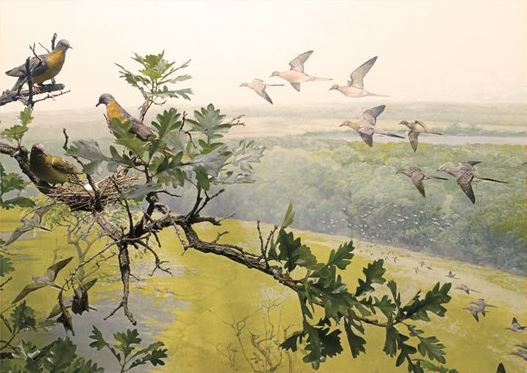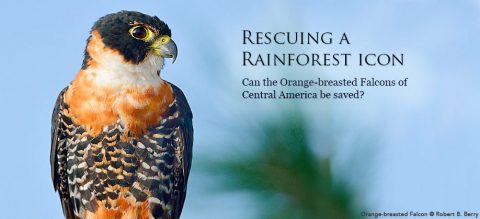View From Sapsucker Woods: Lessons From the Passenger Pigeon
By John W. Fitzpatrick
From the Autumn 2014 issue of Living Bird magazine.
October 15, 2014
In September 1, 1914—exactly 100 years ago—the last living Passenger Pigeon died in her cage at the Cincinnati Zoo. Martha had never actually been a pigeon of passage, nor even flown free in the wild. She was a captive-hatched female, probably 29 years old at her death. Her final male friend had died four years earlier at the same zoo, leaving Martha as the barren relic to close the worst human-caused extinction story on record. Proper respect for this centenary of Martha’s ignoble death requires placing her story into our 21st-century context. Perhaps by grasping the enormity of that loss we might hold more dear what is still abundant, or could be again.
The Passenger Pigeon could be the most abundant bird species ever to have existed. Accounts of its colossal numbers read like science fiction. Single migratory flocks more than a mile wide flying at 60 miles per hour literally blackened the sky for days. Some contained up to three billion birds. Dense nesting colonies smothering beech and oak forests of northeastern North America were, by today’s standards, beyond imagination. As late as 1878, a single colony near Petoskey, Michigan, covered more than 215 square miles while being ravaged by market hunters. At the same place in 1881, 10 million pigeons were killed, and this would be their last major nesting in Michigan. No colony was left untouched during the pinnacle decade of slaughter, and technology compounded the destruction. Custom-laid railroad tracks provided access to the colonies, facilitating industrial-scale killing that yielded trainload after trainload of pigeons stuffed 300 or more to a barrel. To quote Mark Avery (A Messsage from Martha, Bloomsbury, 2014), “Passenger Pigeons killed in Wisconsin were eaten in Boston and New York.” Staggeringly abundant in the 1870s, Passenger Pigeons were rare by 1890 and extinct in the wild by 1900. Only Martha and a few caged compatriots remained.
How could society allow this to happen? The question will haunt and anger me all my life, as it should us all. But a far more important question merits our attention today: When will we stop doing this?
Where nature’s bounty seems limitless we still fail to control ourselves, as in the world’s fisheries. Pacific bluefin tuna have lost 96 percent of their population, yet we hunt them with abandon across the seas to fill cravings for sushi. From cod and grouper to sea bass and sharks, unconscionable overharvesting—aided by ever-advancing technology—continues to collapse fish populations while outcries for reduced harvests draw age-old scorn from fishermen and governments alike. Would it help if we started referring to marine fish as “Passenger Pigeons of the Sea?”
Unrelenting harvest of the world’s last old-growth forests is still condoned by most governments. Coastal estuaries and tidal flats—cradles of marine bounty—are still dredged and filled at catastrophic rates. In scenes eerily reminiscent of the Passenger Pigeon days, wild birds all over the world continue to be netted, noosed, glue-trapped, and shot by the millions for food and trade, to the point that local populations of once-abundant species are nearly gone.
Passenger Pigeons will be relevant to the future of life on earth only if we humans begin respecting what they taught us, relive their relentless destruction, and grasp the profound truth that no bounty is so abundant as to withstand unfettered harvest. In striving to achieve sustainable balance with the natural world, we must prioritize not just existence, but fecundity. The world today needs a “Common Species Act.” Martha reminds us that protecting abundance is just as important as keeping the rarest species from going extinct.

All About Birds
is a free resource
Available for everyone,
funded by donors like you
American Kestrel by Blair Dudeck / Macaulay Library



